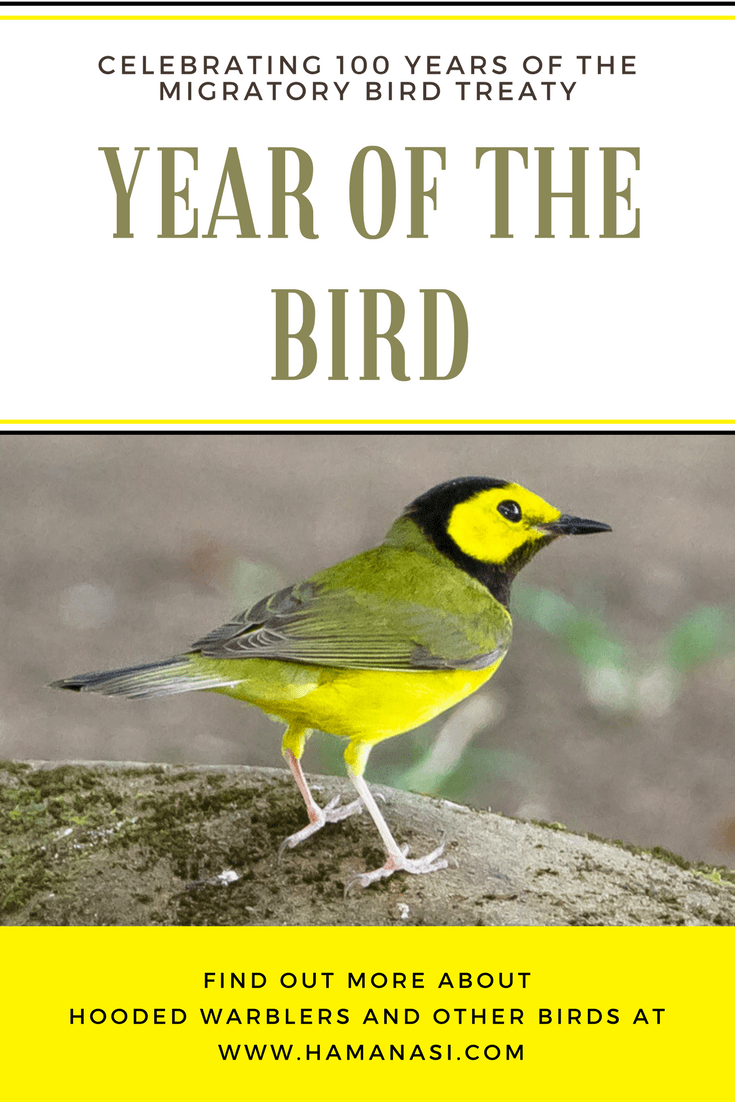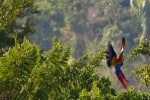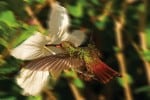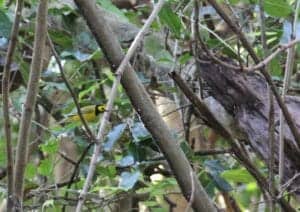
Big things come in small packages: Landing in at approximately 5 inches long (about the size of a sparrow), say hello to the Hooded Warbler (Setophaga citrina) — Hamanasi’s featured March bird in our Year Of The Bird campaign. This critter eater is not only distinguished by its size, but more so by where it is commonly found and its features. They flaunt yellow, black and white feathers with its wings being slightly olive. Males have bright yellow face surrounded a black hood and throat. Females also have yellow cheeks, but have an olive crown and back.
2018 is the Year of the Bird!
Why is that? Not because of the Chinese calendar – they’re on the Year of the Dog, but there’s room for more than one animal this year. 2018 marks the centennial of the Migratory Bird Treaty Act, perhaps the most powerful and important legislation ever passed to protect birds. To celebrate the landmark treaty, Hamanasi is joining National Geographic, Audubon, BirdLife International and the Cornell Lab of Ornithology on a “Year of the Bird” Campaign. Nature lovers around the world are invited to commit to protecting birds today and for the next hundred years.
Every month in 2018 Hamanasi will bring you a post introducing you to one of the many migratory birds you can see in Belize, with information from our expert birding guides and pictures taken by our guests.
- January: The Roseate Spoonbill
- February: The Scarlet Macaw
- March: The Hooded Warbler
We hope you’ll join us in celebrating the Year of the Bird, either by visiting Hamanasi or by sending us your pictures of migratory birds. We’d love to feature your work in next month’s post! #BirdYourWorld
The Hooded Warbler spends half it’s time in the tropics and only heads north in the summer to breed, mostly in the eastern of the United States. Winter in the tropics? Sounds like a pretty good deal to us! This means they are easy to spot on our Tropical Birding Tour during their winter vacations (late August to late April).
What does our youngest birding guide, Dan Quintanilla, have to say about the Hooded Warbler?

What’s for Dinner: Their habitat, of course, is based on their eating habits. A buffet for these birds consist of insects found in the forest undergrowth and low branches; thus, you don’t have to look up to see them fanning their tails open shut, which they do often. Hooded Warbler’s delights include beetles, flies, spiders, caterpillars and basically any insect served on a leaf or shrubs. They don’t venture up very high, but males are more daring than females in this aspect, they do so when in search of food for their young – who wouldn’t do anything for a good beetle?
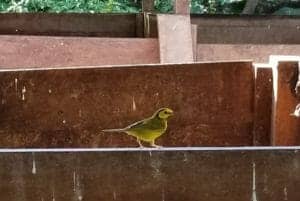
No Love Lost, No Love Found: Unlike last month’s featured bird the Scarlet Macaw, which mates for life, Hooded Warblers are not about to give up an inch of their single life. So much so that both sexes keep a very distinct line in their respective feeding territories during winter. They are known to attack an intruder who dares enter their winter getaway. Yes, that’s right, they vacation separately. Males are often found in humid lowlands and mature forests, while females are in secondary forests and seasonally flooded areas.
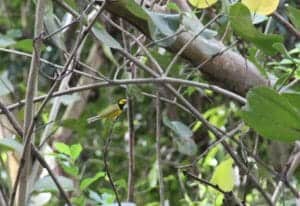
So great are Hooded Warblers’ need for independence that during winter the males and females are not often found together. They meet when it’s time to reproduce. Once the eggs are hatched, the brood is divided with each adult caring for its respective fledglings.
FYI – Males will often return to the same nesting grounds, but females don’t!
Inherent Independence: Females are known to lay 4 eggs per mating season with eggs hatching within 12 days. The young birds are known to leave the care of the parent about 9 days after hatching – who really needs to spend that much time with mom and dad?
Hanging Out for a While: This bird species enjoys a healthy population and is not currently under any serious survival threat – phew!
Music to Your Ears: The calling of the Hooded Warbler is a clear whistle often sounding like: ta-wit ta-wit ta-wit tee-yo. Although they do not sing much when in Belize, their whistle is often heard when in mating season.
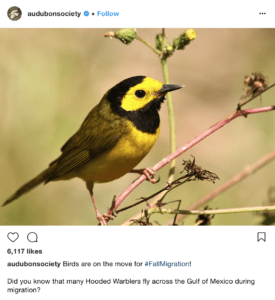
Birding Tips: Have you been hearing a louder buzz about birds this year? It’s March and the buzzing doesn’t die down; want to see what all the noise is about? Become a bird watcher! No, we don’t exactly mean go watch the Angry Birds movie, (although that might not be a bad idea). Start by reading an expert guide to 10 great tips for beginner bird watchers from leading bird experts at the Cornell Lab of Ornithology.
Coming Next Month: our featured feather friend will be the Tricolored Heron. We will delve into how they enjoy solitary meals, but are sociable birds!
